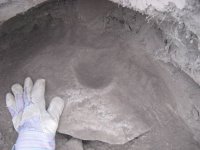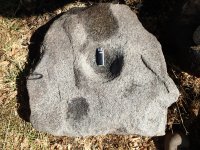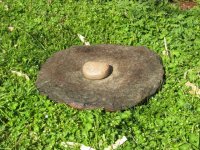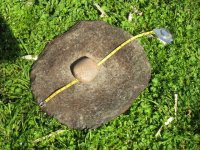If you've got some "biguns", post 'em up...

This "killing stone" was found at the top of a narrow valley
along with a dozen other various size & shaped butchering
stones, possible paleo?

A couple of camp site stones used for various tasks

A beautiful piece of pet wood core/multiedge
tool found in proxcemity of the Black Mtn Folsom
site at 9K elevation in San Jauns, could be old...

This "killing stone" was found at the top of a narrow valley
along with a dozen other various size & shaped butchering
stones, possible paleo?

A couple of camp site stones used for various tasks

A beautiful piece of pet wood core/multiedge
tool found in proxcemity of the Black Mtn Folsom
site at 9K elevation in San Jauns, could be old...
Last edited:
Upvote
0



























